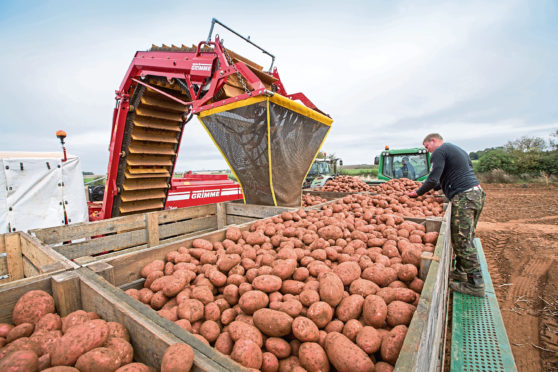A damning verdict on the efficacy and relevance of levy body AHDB has been delivered by a ballot of almost 2,000 potato, vegetable and flower growers who pay levies to the organisation.
The poll, organised by three disenchanted Lincolnshire growers and carried out by the independent polling company Civica Election Services Ltd (CES), received responses from 661 growers – more than a third of those contacted – which is a sharp contrast to the 0.5% response rate to the government’s call for views on AHDB in 2018.
The findings were stark, with 92% of respondents calling for an immediate ballot on the funding of the AHDB by statutory levy and stating its policies were of “no or marginal benefit” to their business, and 80% of growers in the horticulture and potato sectors stating they do not want to pay a statutory levy.
Vegetable and potato producer John Bratley, one of the ballot organisers, said: “These results highlight again that the statutory levy has extracted circa £140 million from horticulture and potato growers over the last 12 years while delivering nothing in return.
“With margins in these sectors under such pressure, and the government keen to forge a new future for all sectors of British farming, we look forward to discussing these findings with Defra Secretary of State George Eustice and Parliamentary Under-Secretary Victoria Prentis.”
The AHDB did not support the ballot and declined to share contact details of all levy payers, a decision which the organisers claimed had denied around 1,800 growers from having a vote.
In response to the findings, AHDB chief strategy officer Tom Hind said the levy body would study the results carefully and pointed out the horticulture levy had been reduced by 10% this year. He added AHDB was working with growers to propose a new levy formula.
Mr Hind said: “Growers need to feel that AHDB is accountable and it’s important to recognise our priorities are all shaped and driven by growers who sit on our boards, committees and panels.
“We get regular feedback that our work is valued by many growers, particularly on areas such as crop protection, storage, labour and skills. But we recognise we need to change, in line with the significant challenges the horticulture and potato sectors are experiencing.”
However NFU Scotland (NFUS) said it had consulted with members about the future of the AHDB during the government review in 2018 – and while views varied between members, overall their responses did not match the poll’s findings.
The union’s policy manager, Peter Loggie, said: “Scottish producers favoured continuation of AHDB, funded by compulsory levy but a number of changes were suggested.
“On the levy itself the main concern was slippage, ie some producers not paying when then should. There was agreement within NFUS that levy payers should have an opportunity to vote on the AHDB every five years.”
